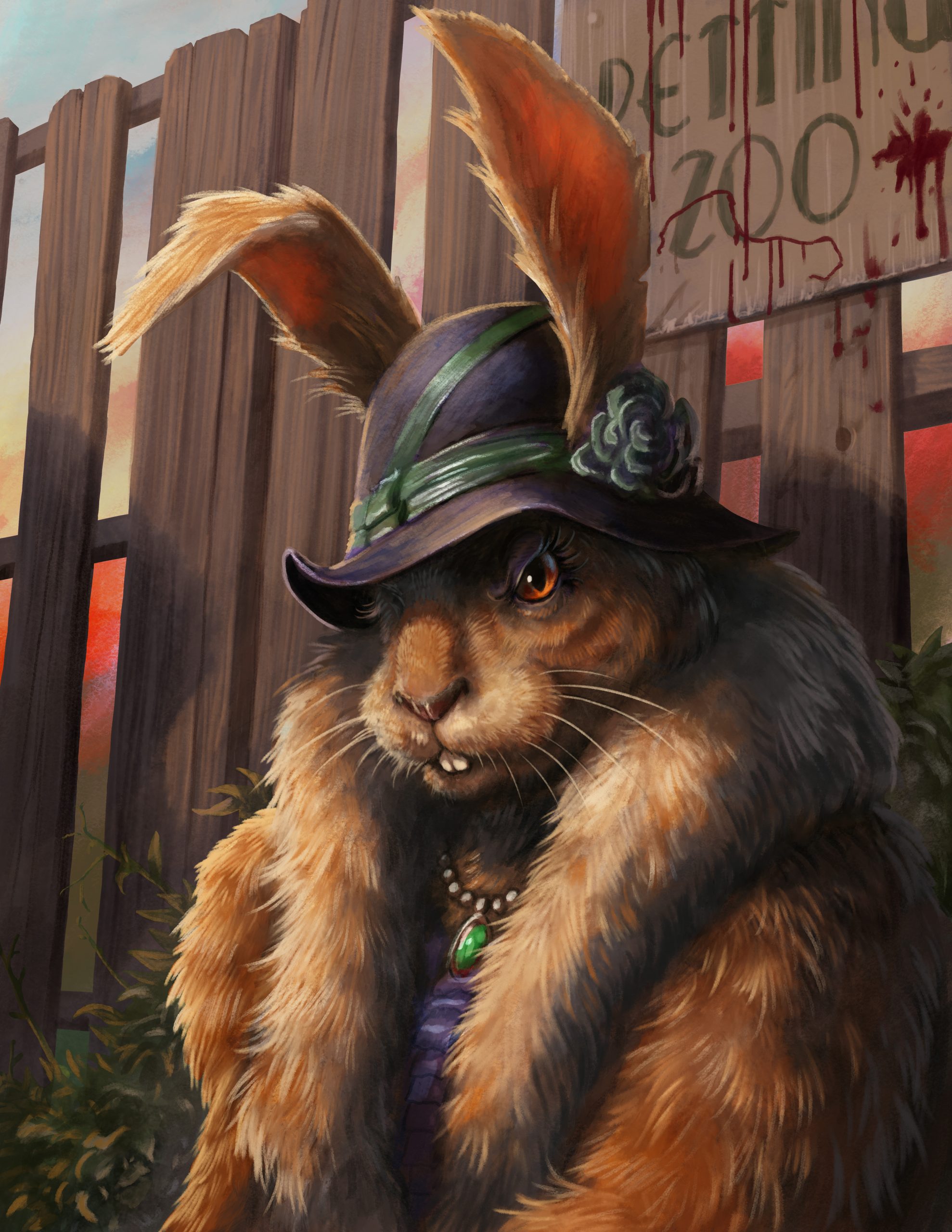
Our live Open Legend game’s aether parasites invade!
This article comes to Nerdarchy from a fan of the Open Legend RPG-sponsored “Aether Skies – The Beginning of the End” live game that streams Fridays at noon EST. YouTuber AJ Kinney was inspired by an encounter in Session 6 of the game and sent in this in-depth look into one of the fantastic creatures Nerdarchist Dave challenged the party with during a long airship voyage – the aether parasite. AJ writes from the perspective of someone living in the world of Zanterra where the game takes place. A blend of fantasy, steam punk, eldritch horror and espionage, the populace lives on floating cities high in the sky. The surface is a desolate, dangerous place, if there even is a surface! Theories abound about what lies below, for no one in memory has traveled there. Or have they…?
Without further ado, let’s get to it and see what AJ, er, Professor Kalthzar Quin Terril has to say.
A study of the aether parasite
Notes on the Strut Striker, Mana Ray, Aether Parasite (or whatever you want to call it) from the library of Professor Kalthzar Quin Terril.

CL Brener Trypanosoma cruzi epimastigote (some kind of parasite) [Image courtesy of Wikimedia Commons]
Ecology
Aether parasites live everywhere. They congregate in places with heavy supplies of aether; sky cities, ancient surface ruins and storm clouds. They prefer clouds and around mountain tops because the thicker atmosphere allows them to “float” with less effort. With cloud cover they are nearly undetectable, so skiff captains be warned.
These parasites draw aether from any source that uses it. In the wild they pose no noticeable threat to natural homeostasis; however, among those who use aether in their daily lives, as I do, they can be quite the nuisance. In cities they drive the production of aether beyond reasonable rates leading to minor power and revenue loss.
They pose a higher risk to air ships. Enough of them could draw the energy from the ships engines causing it to lose altitude or crash. The real threat, however, is to the Aethermancer; one single parasite is capable of draining their life force. Take heed practitioner, your magic cannot harm them.
The universal threat to all things, mankind, is no exception to these parasites. We put them down by the hundreds like vermin, but that does not seem to slow their numbers. They don’t seem to fear us, or even register our presence. There are defenses we can wield to defeat these

A pork tapeworm parasite. [Image from WebMD] (editor’s note: so close to typing WebDM there)
The true threat to their numbers, however, are sky whales, which I have taken to calling storm eaters. These behemoths swallow whole storm clouds and with them flocks aether parasites. They are able to sense the storm eaters and flee when when the beasts get near, often abandoning a fresh source of aether. If you are unlucky enough to be around when that happen, you have bigger concerns then a magic-eating parasite.
Physiology
The aether parasite is a strange but not terribly complex organism. It consists of three parts: a simplistic, brain-spine, nervous system; a singular, mouth to anus, digestive system; and lastly, and most complex, a circulatory system that is actually a cluster of independent systems. What is intriguing is what they lack, and how they overcome that deficit.
The parasites’ brain consists of only two lobes. The frontal lobe, or aether eye, makes up most of the creatures’ brain, and is roughly the size of a balled-up first. This lobe exits for only one purpose – to sense aether. Once it has found its target, signals are sent to the posterior lobe. This small portion of brain, about the size and shape of a thumb, controls the basic instincts of the creature, and it is directly linked to the spinal cord. The spine is a cartilage sheath that covers the esophagus.
Their digestive tract starts with the toothless circular mouth attached to the front of its body, just below the brain. The mouth can stretch to a four-inch diameter. Its function is to suck aether straight from the source but it often swallows other things as well. Anything consumed by the parasite travels through the esophagus, which ranges six to eight feet long, where aether is absorbed into tiny pores along its interior lining. All things non-aether are pushed out the anus at the end of its tail. These things are undamaged as the esophagus has no digestive enzymes.

Giardia lamblia parasite. It’s glowy! [Image from Web MD]
Easily the most complex system this creature has evolved is its circulatory system, consisting of many tiny hearts. The first, and largest, rests just beyond the mouth. Veins inside the parasites mouth bring aether to this main heart where the blood is charged, and then pumped into the parasites brain.
Earlier, I mentioned that the esophagus has many pores. These pores are arranged in clusters, each with their own heart. Blood pumped through these hearts glows a luminescent white when they are charged, a reaction that can be seen through the creatures skin. These cells are sent down the wings where that are transmitted into liquid energy, in the same way an aethermancer can transform aether into water. They create a membrane around their body with this liquid that allows them to float through the air as if it were water. Any excess is stored along the parasites underside. There it waits until the creature is ready to reproduce.
Life cycle
Aether parasites have three distinct life stages: embryonic, adolescent and adult. They are hermaphroditic, both carrying eggs and having the ability to fertilize them. A single parasite can carry hundreds of eggs on the underside of its body until they are fertilized and the cycle begins.
In the embryonic stage the egg is fertilized when it is bathed in aether-charged liquid from a parent parasite, not the one carrying the egg. A jellylike ball forms, the start of a brain, and immediately starts consuming the attached parent’s aether. In this stage they are refered to as an urchin.

Aether, you know, that stuff that surrounds us … I’ll stop right there before the C&D arrives.
As they develop, tendrils appear that will later come together to form the esophagus and vein clusters. Finally when they have eaten enough to become self-sustaining their mouth will form and they will detach from the parent. Thus begins the adolescent stage.
In the second stage of life the aether parasite is called an eel because of its tubular body and swaying movements. In this stage they stay near a single source of aether. They are so small they will never drain it of its power. I have heard tale of some aethermances who keep aether parasite eels as pets, feeding them with small amounts of their own energy. I would not recommend such a practice.
As eels consume aether the blood clusters convert it into cartilage-based wings. The clusters at the front get more aether that the ones further back causing them to be larger toward the front and tapper down to a point at the anus. That is what gives it the distinct, almost triangular, appearance of an adult aether parasite.
Adults, or rays, are what most people think of when they picture an aether parasite. It spends the rest of its life consuming aether until it mates. Their mating practice is a belly-to-belly glide where both partners’ eggs are exposed to the others liquid membrane. After the event they find a place to die as their young consume all the aether they spent their life accumulating.
That is the whole life cycle of the aether parasite. They eat, they grow, they eat some more, they mate, they die, they feed the next generation. A rather depressing life to be sure. I thank the gods every day that I wake up a person and not one of these beasts.
[amazon_link asins=’1533443475,B01MXVZWMC,B01LTHOAGM’ template=’ProductCarousel’ store=’nerdarchy-20′ marketplace=’US’ link_id=’dc588e2a-5646-11e7-9165-4d5f0abaa0a7′]
Related articles
[amazon_link asins=’1533443475,0615547893,1613170297′ template=’ProductCarousel’ store=’nerdarchy-20′ marketplace=’US’ link_id=’9f51a911-5679-11e7-b94d-cd6427a35134′]












Megan R. Miller
June 21, 2017 at 1:55 pmFascinating creatures with fascinating biology and an engaging read at that. -Dr. Lucy
Dave Friant
June 22, 2017 at 11:23 pmSuper loving this article. To think some silly little monster I made up 15 minutes before the game inspired this. Thank you so much. I planted a seed, you watered it, nurtured it, and turned it it into something far greater than anything I came up with.
-Nerdarchist Dave